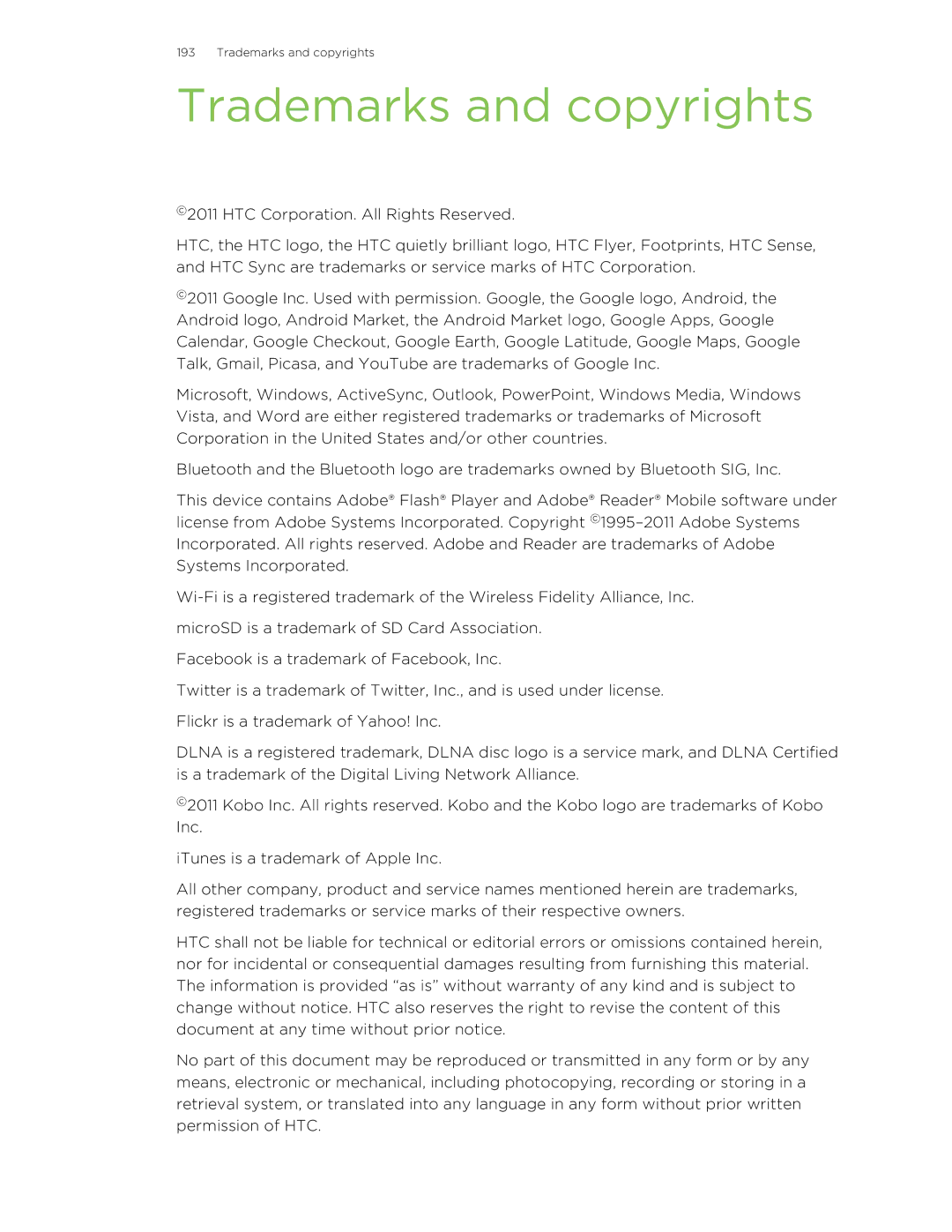HTCFlyerP512 specifications
The HTC Flyer P512 is a tablet that marked HTC's foray into the world of portable computing, combining unique features and robust technology to deliver a standout experience. Launched in 2011, the Flyer was notable for being one of the first tablets to integrate a stylus, catering to users who want more from their tablet than mere media consumption.One of the defining aspects of the HTC Flyer is its 7-inch display, boasting a resolution of 1024 x 600 pixels. While it may not match the larger tablets in pure screen size, the Flyer is lightweight and portable, making it easy to handle with one hand. The display is vivid enough for reading eBooks, watching videos, or browsing the web, providing a balance between visual quality and portability.
Under the hood, the HTC Flyer is powered by a 1.5 GHz Qualcomm Snapdragon processor along with 1 GB of RAM, ensuring smooth performance whether multitasking or running demanding applications. Available in both 16 GB and 32 GB storage options, the Flyer also includes a microSD card slot, allowing users to expand their storage capabilities as needed.
One of the standout features of the Flyer is its HTC Scribe technology, which utilizes the bundled stylus for note-taking and sketching. This capability stands out in a market saturated with touch-only devices, appealing to students and creative professionals alike. The stylus can capture handwritten notes and sketches, converting them into digital format, thereby enhancing productivity.
HTC's Sense UI further enriches the user experience, providing an intuitive interface that makes navigation a breeze. The Flyer runs on Android Honeycomb 3.0, optimized specifically for tablets, offering a host of applications that take advantage of the larger screen. Additionally, the device supports Wi-Fi connectivity, along with optional 3G capabilities, allowing users to stay connected on the go.
The HTC Flyer also features a front-facing camera for video calls and a 5 MP main camera, capable of capturing decent photos and videos. The tablet supports HD video playback, rounding out a feature set that makes it suitable for both entertainment and productivity.
In summary, the HTC Flyer P512 is a versatile tablet that combines portability with productivity-focused features, such as stylus support and a user-friendly interface. While it may not have dominated the market during its time, the Flyer represents an important step in tablet evolution, showcasing HTC's ambition in the portable device space. It laid the groundwork for future innovations while addressing the needs of a niche audience looking for more than traditional tablet capabilities.
